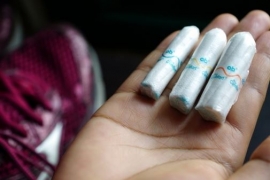有人说:“硬举是对待嵴椎最糟糕的事情之一(Deadlifts are one of the worst things you can do for your spine.)”你同意吗?提供以下六点供大家参考。
要点一:Wolff’s Law及Davis’s Law。
你不能低估物理现象。Wolff’s Law:“健康人士的或动物的骨骼将会顺应外来的负荷”而 Davis’s Law 对于 Wolff’s Law 再加上补充“软组织也将顺应外来的负荷,负荷愈多,软组织愈高.负荷愈少,软组织愈软。”
【硬举 = 强壮骨骼 + 软组织】。为了让组织适应,你需要一个最小必须的张力(Minimal Essential Strain, MES)。同样地,为了强化组织,你需要外在负荷。但 Leg Extensions 及 Leg Curls 动作没办法做到这点。
要点二:若我们看Nachemson Chart的峰值,你会看到“长时间驼背坐姿”几乎跟你在做硬举时的压缩负荷来的多。
※ Nachemson Chart:椎间盘内压(intradiscal pressure)对于压缩负荷的反应。
而根据这点,我的好友 Bret Contreras 说到:
显然,比起大重量的硬举,经常坐着不会给你更高的椎间盘内压。但我十分地同意,久坐比起硬举来的更为有危。你得长时间的承受椎间盘内压,再加上几种的机制造成坐姿减少臀部的活化,机制包括:“软组织上的压缩、髋屈肌的神经相互抑制、因为身体适应短缩的髋屈肌群,髋伸终端的范围受到抑制。”
原文:Obviously regular sitting wouldn’t give you more intradiscal pressure than really heavy deadlifts, but I would definitely agree that prolonged sitting is more deleterious on the spine than deadlifting. You’ve got prolonged intradiscal pressure, plus sitting decreases glute activation by several mechanisms : compression on the tissue, neurological reciprocal inhibition of the hip flexors, and mechanical inhibition of end range hip extension due to adaptive shortening of hip flexors.
要点三:我的偏好。
你很难说服我说“硬举不是肌肥大最好的全身动作之一”,更何况它是最好的功能性动作,可以训练到后侧鍊的肌力、稳定稳定度、髋部活化、爆发力发展等。如果这说服不了你的话,这领域最聪明的人物之一“Gray Cook”在所录制的DVD中说“每个人应该在训练计划中包含硬举”。
要点四:当操作不当时,对于嵴椎,硬举是个很可怕糟糕的动作。
我、Eric Cressey、Mike Robertson、Bret Contreas及其他无数的教练指出“如果教导正确 - 保持嵴椎自然自立及适当的髋关节铰链(Hip Hinge) - 比起其它动作,硬举更能建构一个强壮的身体”。此外,Bret 指出,硬举动作教导臀部来分享负荷、免去嵴椎的负荷。
要点5:当谈到下背研究,就不得不找 Dr. Stuart Mc Gill 这位大人物。
他写了二本书Ultimate Back Fitness and Performance(5th Edition)_Stuart McGill_2004及Low Back Disorders, Second Edition 2nd Edition_Stuart McGill_2007,并且说到躯干的伸展肌群(longissimus, iliocostalis, 竖嵴肌erector spinae, etc)在对抗嵴椎上的剪切力时做了非常好的工作。

要点6:提供智慧/研究来揭穿这无稽之谈。
Granhed et al. (1987) found that powerlifters were able to sustain 4,824 lbs of compressive loading during the deadlift. Theoretically this load is too high for the spine to handle. According to the authors, “the study showed that intensive training will increase the bone mineral content (BMC) to an extent that the spine can tolerate extraordinary loads.”
Karlsson et al. (1993) showed that weightlifters possess 10% greater total body bone density and 13% greater lumbar bone density than controls. Studies by Sabo et. al. (1996), Granhed et al. (1987) and Bennell et al. (1997) confirm this research. A study by Karlsson et al. (1995) suggests that these increases in bone density are maintained for many years following cesation of lifting.
Research by Brinckmann et al. (1989) and Granhed et al. (1987) support the notion that the axial compressive strength of the lumbar spine is directly related to bone density. Researchers showed that the greater the annual loads lifted, the greater the lumbar bone density adaptations.
看了以上的要点,你还是觉得硬举对嵴椎不好吗?最后附上一个硬举的解剖动画。
http://www.youtube.com/embed/o5FvhPAZ_yw
文章来源:山姆伯伯工作坊
更多核心肌群力量训练文章见://www.nduoke.com/core-strength
更多训练文章见 ://www.nduoke.com/training
跑步体能训练://www.nduoke.com/running-workouts
跑步训练://www.nduoke.com/running-trainning
力量训练://www.nduoke.com/strength-training



